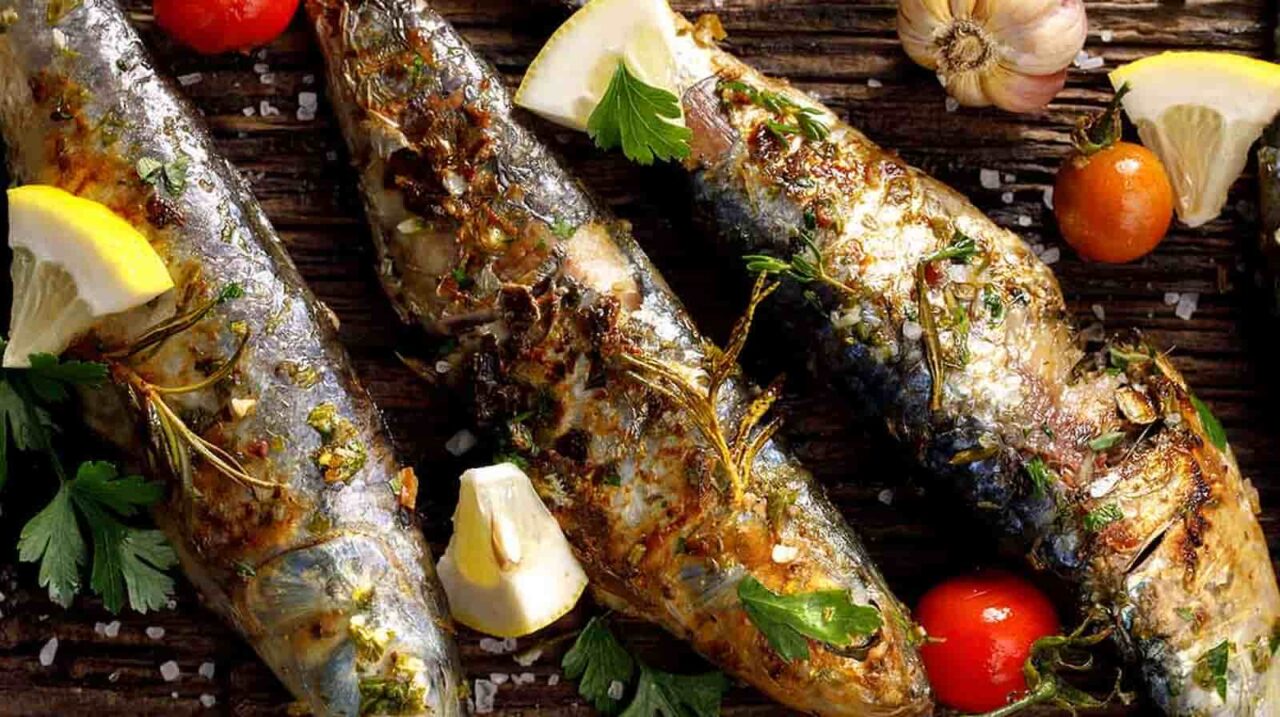National Sardines Day 2023: National Sardine Day is observed on November 24 to honor the wholesome health benefits and incredibly delectable nature of sardines. It is noteworthy that the term “sardine” originated in the Mediterranean island of Sardinia in the 15th century. Sardines are a plentiful and versatile species of fish that find application in numerous sectors, such as bait production, human consumption, fish meal and oil manufacturing, canning, dehydrating, and salting. In addition to phosphorus and calcium, they are an excellent source of omega-3 fatty acids, vitamins D, B12, and B2. Frequently packaged in tin cans, sardines represent a significant trade commodity for Morocco, Japan, and China.
The History of National Sardines Day
Sardines have historically been a significant dietary staple in littoral areas, including the Mediterranean islands, from which the species derives its name. Prior to their rise to international renown and substantial export value, sardines were regarded as “the fish of the poor.”
By developing preserving, Frenchman Nicolas Appert ushered in the golden age of sardines. The ingenious development that would have an enduring impact on the food industry was first documented in 1810 in the cookbook “The Art of Preserving All Sorts of Animal and Vegetable Substances for Several Years” by Nicolas Appert. An Englishman named Joseph-Pierre Colin created canned sardines by combining this innovation with Breton’s well-known method of sardine stowage.
By 1836, Colin’s annual output had increased to around 30,000 cans. This grew to 50 million cans over time due to the establishment of an additional 30 minor factories. A significant decline in the sardine population inhabiting the coastal waters of France caused Spain and Portugal to surpass France in tinned sardine exports prior to the conclusion of the 19th century. The 1870 Franco-Prussian War exacerbated the French predicament by impeding their exports to North America, thereby establishing a favourable environment for American entrepreneurs to penetrate the market.
The Eagle Preserved Fish Company, founded in Eastport, East Coast, in 1875, marked the beginning of a prosperous era for the American sardine industry. The proliferation of small sardine factories along the coasts of Maine and California increased the quantity of Atlantic herrings exported internationally. Due to World War II, the sardine industry on the West Coast began to decline in the 1940s. Twenty years later, sales of tinned sardines began to decline on the East Coast, and by 2010, the final factory in Maine had ceased operations.
In spite of the fact that they are considered low-end fare and no longer a significant export for the United States, sardines remain a delicacy in Spain and Portugal. It is even customary to age tinned sardines as one would wine prior to consuming them.
What Do You Love About America Day 2023: History, Activities, Dates, and FAQs
National Tie One On Day 2023: Activities, History, FAQs, Dates, and Facts About apron
National Nathan Day 2023: FAQs, Dates, History, Activities, and Facts About Nathan
FAQs for National Sardines Day
Are sardines mercury-rich?
Sardines, as reported by the F.D.A., are among the fish that contain the least amount of methyl mercury. This is due to their brief life span and predation on plankton, which effectively inhibits mercury accumulation within their bodies.
Is it preferable to prepare sardines in water or oil?
Although canned in oil, sardines are higher in omega-3 fatty acids, they are less healthy due to their reduced cholesterol and fat content when compared to water-canned sardines. Compared to sardines canned in water, which contain 30 milligrams of cholesterol, 5 grams of total fat, and 1.8 grams of saturated fat, a 3-ounce can of sardines in oil contains 40 milligrams of cholesterol, 11 grams of total fat, and 5 grams of saturated fat.
Is it acceptable to consume sardines daily?
It is recommended to consume it twice per week as opposed to daily, due to its lipid content, which constitutes a cardiovascular disease risk factor.
Participation in National Sardines Day Activities
Prepare a sardine dish.
Sardine is a multipurpose fish that can be prepared in any way desired and incorporated into a variety of dishes. It can be grilled, roasted, deep-fried, or consumed raw, similar to sushi. Consider integrating it into your preferred gastronomic creations, such as crostini, pasta, noodles, tacos, rice, and pizza.
Seek out anchovies.
An additional method to observe National Sardines Day is to dine at a local seafood or sardine eatery. Sardines adorned with cultural delicacies from Portugal, Japan, Greece, and more are offered at restaurants throughout the nation. Consult Google or Yelp to identify the establishments in your vicinity, and plan a visit with a significant other or a friend.
Visit the Sardine Museum in Maine.
From the 1940s to the 1960s, the Maine coastal regions were the epicenter of the sardine golden age in the United States. Although the final cannery ceased operations in 2010, visitors to the Maine Coast Sardine History Museum can still recall those golden years. From capture to can, organize a tour of this historic site with a companion.
Five Fascinating Sardines Facts You Probably Didn’t Know
As excellent wine ages
Before being consumed, tinned sardines are allowed to mature for years in some regions of Europe.
21 species are referred to as pilchards or sardines.
Approximately six of the twenty-one species of sardines are referred to as pilchards, while the remaining twelve are termed sardines.
These seafoods are the second most consumed.
Sardines are the most frequently consumed fish by humans, following salmon.
Their maximum lifespan is six years.
Although sardines have a maximum longevity of thirteen years, they only survive for six of those years.
Sardine migration
An annual feeding frenzy occurs between May and July, when billions of anchovies migrate from the south coast of South Africa to the subtropical waters of the east coast.
NATIONAL SARDINES DAY DATES
| Year | Date | Day |
|---|---|---|
| 2023 | November 24 | Friday |
| 2024 | November 24 | Sunday |
| 2025 | November 24 | Monday |
| 2026 | November 24 | Tuesday |
| 2027 | November 24 | Wednesday |


















